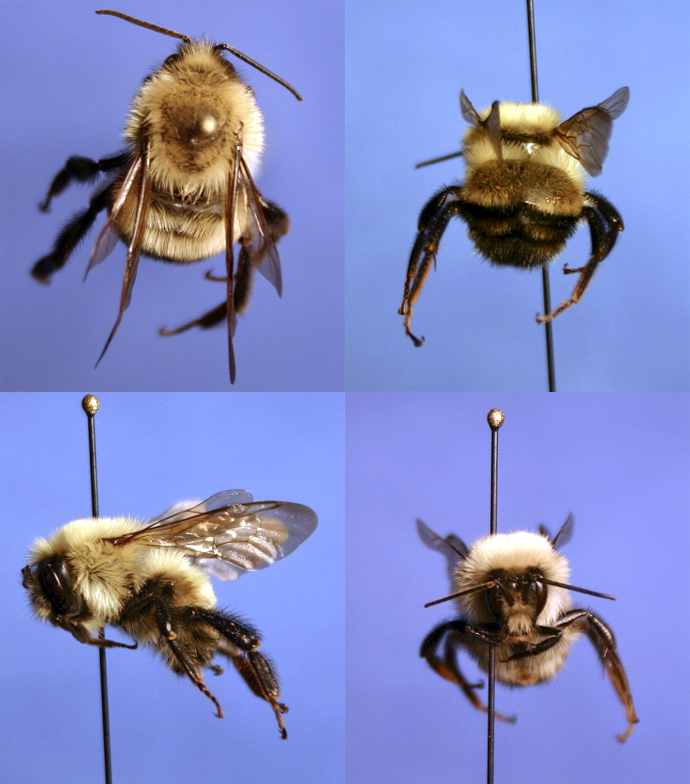Queen: Face black, vertex with a triangular patch of yellow hairs; sometimes a few black hairs intermixed.
Thorax entirely yellow except for a small area on the disc, which is smooth and shining, and bordered by scattered
black hairs; pleura with yellow hairs to bases of the legs. Abdominal tergite 1 yellow, tergite 2 with yellow on the
middle part, edges black with a few yellow hairs laterally; middle of apical margin slightly incised with black. Venter black,
legs with a sprinkling of yellow hairs.
Worker: Resembling the queen in the markings; the females exhibit no variation.
Male: Face bearing a considerable admixture of yellow and black hairs; vertex yellow. Resembling females in all
markings, but the yellow on tergite 2 more extensive and with considerable yellow hairs on the lateral margins, thus
leaving 2 spots or patches of black hairs on the tergite. Venter with many yellow hairs, but some black hairs on the
basal sternites; legs each bearing considerable yellow hairs. VARIATION: May have tergite 2 almost entirely yellow.
Also, males commonlyhave tergite 5, and rarely tergites 5 and 6, mostly yellow.

